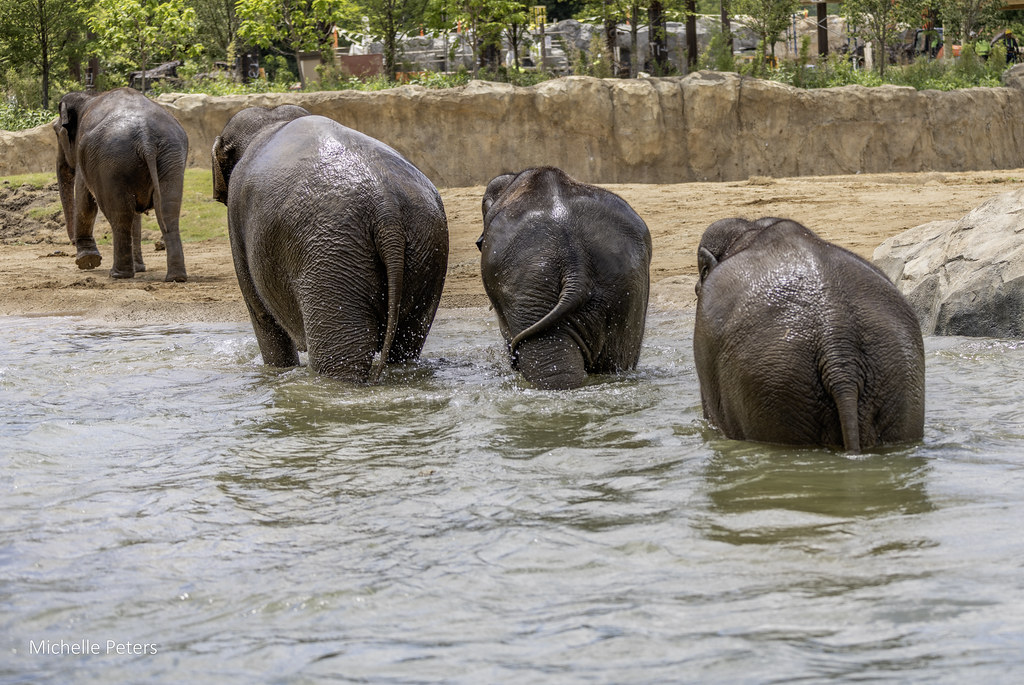Summary of Elephants, Lions, and Kangaroos Walk on Water at the Cincinnati Zoo:
The Cincinnati Zoo & Botanical Garden is making significant strides in water conservation by implementing sustainable practices such as using stormwater tanks, which have helped to save billions of gallons of water. These efforts, including a million-gallon capacity stormwater tank under the five-acre elephant habitat, have dramatically reduced water use and moved the Zoo closer to its goal of zero net water consumption. Beyond fixing leaks and monitoring water use, the Zoo has also installed additional stormwater retention tanks and engaged in hydroponic farming. These initiatives have not only saved millions on utility bills but have also prevented water from overwhelming the sewer system and affecting nearby areas. Additionally, the Zoo is collaborating with conservation partners in Kenya, advising on increasing the resilience of community water systems amidst drought and other challenges. Their work focuses on both improving water quality and enhancing water resilience in communities, demonstrating the Zoo’s commitment to global water security. Furthermore, the Cincinnati Zoo is exploring new ways to minimize the use of fresh water in collaboration with Roto-Rooter, encouraging visitors to consider rainwater reuse at home and supporting environmental education through initiatives like the Rain Barrel Art Auction.
- Innovative water conservation strategies at the Cincinnati Zoo
- The role of stormwater tanks in habitat construction and environmental sustainability
- The Cincinnati Zoo’s contribution to global water conservation efforts through partnership and education
- How community involvement plays a crucial role in conservation initiatives
- Animal welfare and conservation practices: A closer look at elephants, lions, and kangaroos
Water conservation has become a critical environmental issue, compelling institutions around the globe to adopt more sustainable practices. The Cincinnati Zoo & Botanical Garden stands out as a leader in this space, especially with its progressive approaches towards conservation and sustainability. The zoo has implemented several groundbreaking measures to manage water use effectively, not only supporting local biodiversity but also extending its conservation impact globally.
Firstly, the zoo has significantly reduced its water utilization through the installation of stormwater retention tanks. These tanks are strategically placed beneath animal habitats, such as the impressive five-acre elephant trek. This innovative system captures rainwater, which can then be recycled and used within the zoo, greatly reducing the need for fresh water. This initiative alone has propelled the zoo towards its goal of achieving net zero in water consumption. The stormwater management system not only conserves water but also plays a vital part in preventing runoff and reducing the risk of flooding in neighboring communities.
Beyond infrastructure improvements, the Cincinnati Zoo has embraced technology to monitor and reduce water usage. Advances in utility control and metering have been crucial in creating a more efficient water management system. The meticulous tracking of water use across the zoo has prevented the wastage of resources, contributing to the overall sustainability of the zoo’s operations. This focus on utility management highlights the zoo’s commitment to incorporating technology for environmental stewardship.
The Cincinnati Zoo’s conservation efforts have not gone unnoticed. By partnering with organizations like SORALO in Kenya, the zoo has extended its impact to water conservation projects on an international scale. These collaborations aim to enhance water resilience in communities, addressing the challenges presented by drought and scarcity. The exchange of knowledge and practices between the Cincinnati Zoo and its global partners underscores the importance of collaborative efforts in addressing pressing environmental issues.
Community engagement is another cornerstone of the zoo’s conservation strategy. Initiatives such as the Rain Barrel Art Auction serve to involve the public in sustainability efforts while raising funds for environmental education. Through these community-centric projects, the zoo fosters a culture of conservation awareness and action beyond its boundaries.
Furthermore, the welfare of animals such as elephants, lions, and kangaroos heavily relies on the availability of fresh water for drinking and habitat maintenance. The zoo’s innovative water management practices ensure that these species enjoy a living environment that closely mimics their natural habitats. This commitment to animal welfare is closely aligned with the zoo’s broader conservation and sustainability missions.
In summary, the Cincinnati Zoo & Botanical Garden’s efforts to conserve water and implement sustainable practices offer valuable insights into the potential for institutions to positively impact the environment. Through its innovative stormwater management systems, international partnerships, and community engagement initiatives, the zoo not only enhances the well-being of its resident flora and fauna but also contributes to global conservation efforts. The work being done by the zoo exemplifies how targeted, thoughtful actions can lead to significant environmental benefits, underlining the importance of conservation in today’s world. The case of the Cincinnati Zoo serves as an inspiring model for zoos and similar institutions worldwide, encouraging a shift towards more sustainable and environmentally friendly practices.


